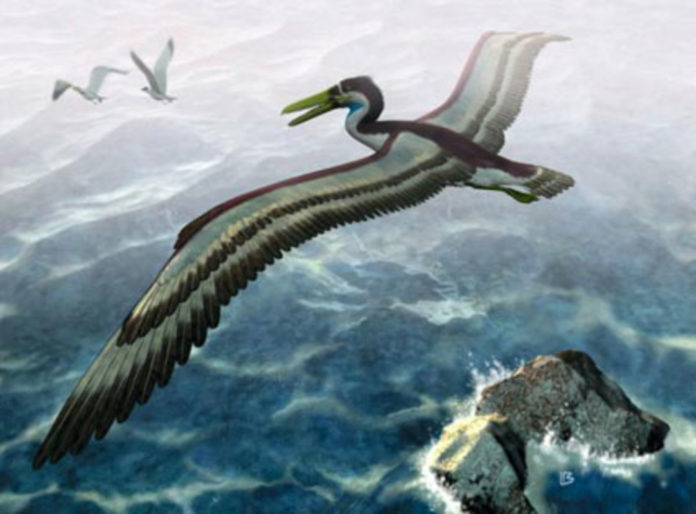A new type of large, prehistoric bird has just been brought to light in the Canadian arctic. A team of geologists from the University of Rochester discovered the new species, which is approximately 90 million years old, and published their findings this week in the journal Scientific Reports . The discovery places the bird among the oldest avian records ever found in the Northern hemisphere.
The bones of the bird, named Tingmiatornis arctica, show that it probably looked a bit like a cross between a large seagull and a cormorant, a large aquatic bird, and was likely a similar size with a wingspan of over a meter.
Along with the fossils from previous excursion the new bird helps to predict the cleared view of ecosystem some 90 million years ago in the Canadian arctic.
The new bird fossils are part of a freshwater vertebrate fossil assemblage that documents a period of extreme climatic warmth without seasonal ice, with minimum mean annual temperatures of 14 °C. “The extreme warmth allowed species expansion and establishment of an ecosystem more easily able to support large birds, especially in fresh water bodies such as those present in the Turonian High Arctic”: said Richard K Bono in his publication.
Bird fossils from Turonian (ca. 90 Ma) sediments of Axel Heiberg Island (High Canadian Arctic) are among the earliest North American records.
In addition to the diverse fossil assemblage of this locality, isotopic studies of foraminifera suggest extreme global warmth during the Turonian. These studies indicate bottom water temperatures between 18 °C and 25 °C with surface waters as warm as 35 °C. Available global circulation models with elevated CO2, hypothesized on the basis of a commensurate increase of global magmatism, can reproduce some but not all of the observed Turonian polar warmth.

Now let us see how these climate records help us predict the future and prepare for our future.
Building historic climate records helps scientists determine how different species and ecosystems are affected by climate change. The way different species are distributed around countries can help predict the effects too.
By looking at fossil and sediment records, the team determined that Tingmiatornis arctica would have lived in a volcanic environment which would have been busy with turtles, champsosaurs and crocodile-like reptiles. This is very different to the Arctic temperatures you find there now.




























